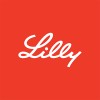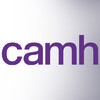
A Study Comparing the Efficacy and Safety of Duloxetine and Placebo for the Treatment of Depression...
Major Depressive DisorderThe purpose of this study is to compare the efficacy and safety of duloxetine 60 mg once daily to placebo on depression in elderly patients (greater than or equal to 65 years of age). Patients who do not respond in the first 13 weeks will be eligible for rescue using pre-defined criteria. Patients randomized to duloxetine 60 mg/day meeting the rescue criteria will be increased to 120 mg/day. Patients randomized to the placebo arm meeting the rescue criteria will be assigned to duloxetine 60 mg/day.

Evaluation of the Effects of Duloxetine on Norepinephrine
Major Depressive DisorderThe purpose of this study is to evaluate how taking duloxetine 60mg every day affects the transfer of two normal body chemicals, 3,4-dihydroxyphenylglycol (DHPG) and norepinephrine (NE), across cells in blood and cerebrospinal fluid.

MDD POC Study GSK372475 Subjects Depressive Disease
Depressive DisorderTo evaluate the efficacy, safety and tolerability of GSK372475 compared with placebo in the treatment of outpatients subjects with major depressive disorder to exhibit decreased pleasure, interest and energy.

Evaluation of Three Continuation Therapies After ECT Concerning Efficacy and Cognition in Severly...
DepressionMajor DepressionThe purpose of this study is to evaluate three different continuation treatments after acute ECT concerning efficacy and impact on cognition in severly depressed patients.

Safety Study of Ziprasidone (Geodon) for the Depressive Mixed State
Bipolar DisorderBipolar Depression1 moreMixed states in bipolar disorder have long been recognized. Over a century ago, it was argued that mixed states were the most common episodes in manic-depressive illness. A mixed state is defined as a person who is experiencing symptoms of both depression and mania. Currently, a person must have depression plus 3 or more manic symptoms for the episode to be diagnosed mixed. Using this narrow view, less than 10% of episodes in patients with bipolar disorder would meet criteria for a mixed episode. A broader view requires that the person have at least 2 manic symptoms. Using this broader view, data suggest that about 50% of episodes in bipolar disorder would be diagnosable as mixed states. Studies suggest that the majority of persons with a depressive mixed state have bipolar disorder type II. Many people who have a mixed state will also have major depression. Even with such high potential rates of mixed episodes in both bipolar disorder and major depression, there have been few studies addressing the issue. The purpose of this study is to look at how effective Geodon is in treating the depressive mixed state in people with bipolar or major depression. This will be the first clinical trial that is both double-blind and randomized.

St. John's Wort And Kava In The Treatment Of Major Depressive Disorder With Comorbid Anxiety
Depressive DisorderMajor1 moreSJW has the greatest evidence of herbal medicine efficacy in treating MDD. In treating anxiety, kava has the greatest evidence of efficacy. As comorbidity of MDD and anxiety commonly occurs, it is conceivable that a combination of an established antidepressant agent such as SJW and an established anxiolytic agent such as kava may effectively treat MDD presenting with comorbid anxiety. It is possible that a beneficial synergistic effect may also occur between SJW and kava, improving the treatment outcomes in MDD with comorbid anxiety, than by the individual substances alone. Determination of this is not addressed in this study due to limitations of time and resources. The determination of the strength of the SJW-kava combination will be ascertained by comparing similar trials using SJW and kava mono-therapy in addressing MDD and GAD. The hypothesis is that a combination of SJW and kava will reduce MDD occurring with comorbid anxiety more than placebo.

Attachment Security as Mediator and Moderator of Outcome in Major Depression
Major DepressionIn this study, the focus is on an individual's attachment security and its relation to treatment outcome in Major Depression.Adult attachment reflects how one seeks psychological and physical proximity to others for security and protection in times of stress. Researchers typically define four types of attachment security: one secure and three insecure (preoccupied, dismissing, and fearful). Adults with Major Depressive Disorder (MDD) will be randomly assigned to either Interpersonal Psychotherapy (IPT) or to Cognitive Behavior Therapy (CBT). The expectation is that adults with avoidant attachment styles will respond better to CBT, and adults with preoccupied attachment styles will respond better to IPT. Also, in comparison to CBT, outcome in IPT is hypothesized to be more closely related to change in attachment.

Brain GABA Levels and Treatment Response in Major Depressive Disorder
Major Depressive DisorderThis study will evaluate changes in brain gamma-aminobutyric acid (GABA) levels due to treatment with escitalopram in people with major depressive disorder.

Duloxetine Versus Duloxetine Plus Non-Drug Therapy for Depression
DepressionThe primary purpose of this study is to determine if duloxetine plus non-drug intervention is more effective than duloxetine alone in patients with depression.

A Double Blind Sham Controlled Trial of tDCS in Treating Schizophrenia and Depression
SchizophreniaMajor DepressionThe project will investigate the use of a novel technique, transcranial direct current stimulation (tDCS) in the treatment of patients with schizophrenia and patients with depression. tDCS involves the application of an extremely weak continuous electrical current to the brain through the placement of anode and a cathode on the scalp. The electrical current is generally completely imperceptible after initial period of tingling which takes about 30 seconds. Stimulation under the anode appears to increase brain activity where as stimulation under the cathode has the opposite effect. This research plan involves two clinical trials: A study using tDCS to treat both the positive and negative symptoms of schizophrenia. The negative symptoms of schizophrenia such as lack of motivation and energy appear to arise due to a lack of activity in frontal brain areas. Positive symptoms such as hallucinations and confused thoughts may arise through over activity of brain areas more on the side and towards the back of the brain called the temporal cortex. We plan to apply tDCS such that it can simultaneously increased activity in these frontal brain areas and reduce activity over temporal cortex. We will compare active stimulation to a placebo condition which involves turning the stimulator off after 30 seconds. The capacity to target multiple symptom clusters is unique with this type of brain stimulation. The study using tDCS in treatment resistant depression builds on a work with transcranial magnetic stimulation (TMS). TMS techniques in depression seem to work which increased left frontal brain activity or decrease right frontal brain activity. tDCS will be used to do the same thing with the anode used to increase left-sided brain activity and the cathode used to simultaneously decreased right-sided brain activity. tDCS is potentially a better tolerated procedure than TMS and does not appear to have the same risk of seizure induction. Importantly, the equipment is quite inexpensive and this may prove to be an extremely safe and effective low-cost treatment for psychiatric disorders in Third World countries.
